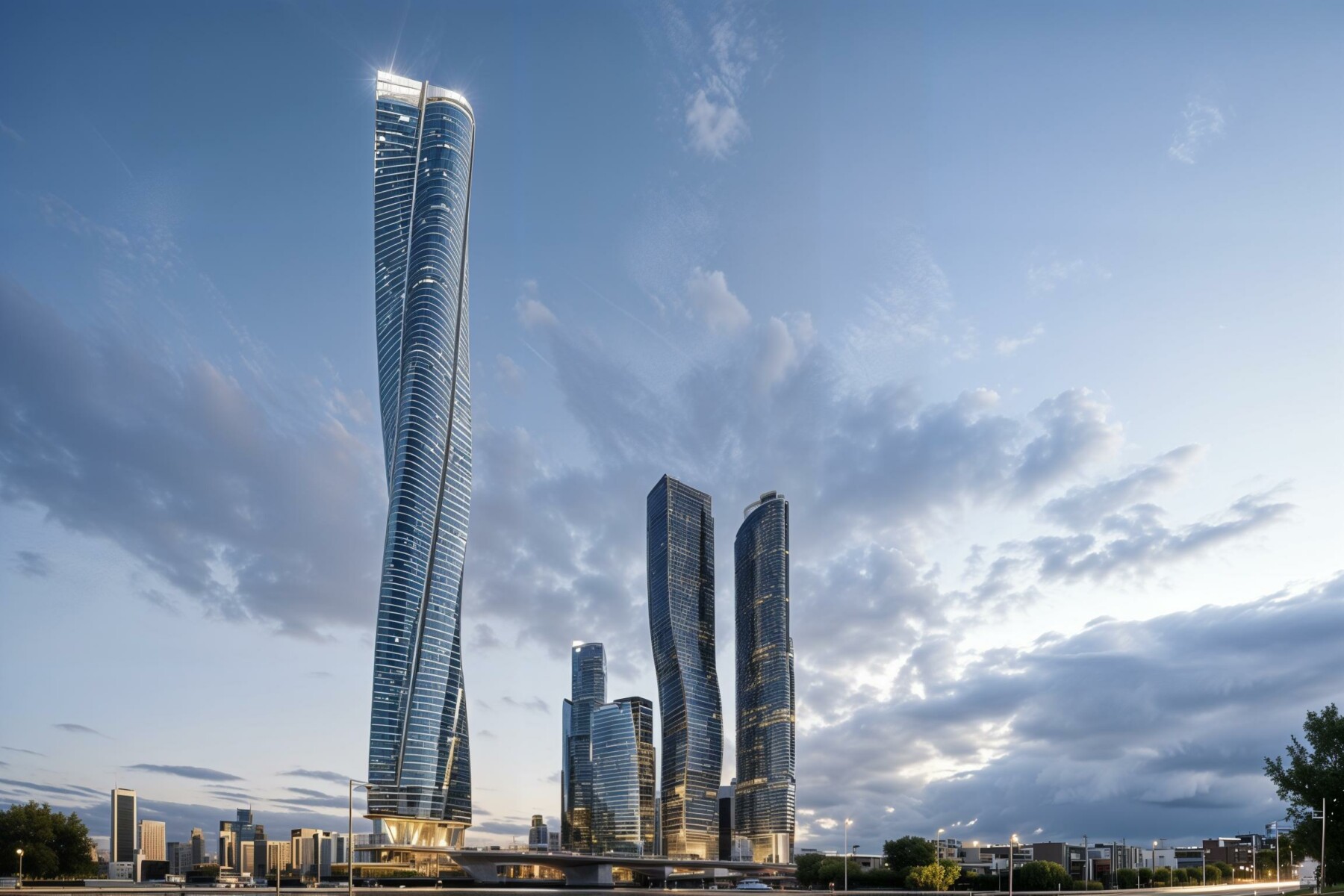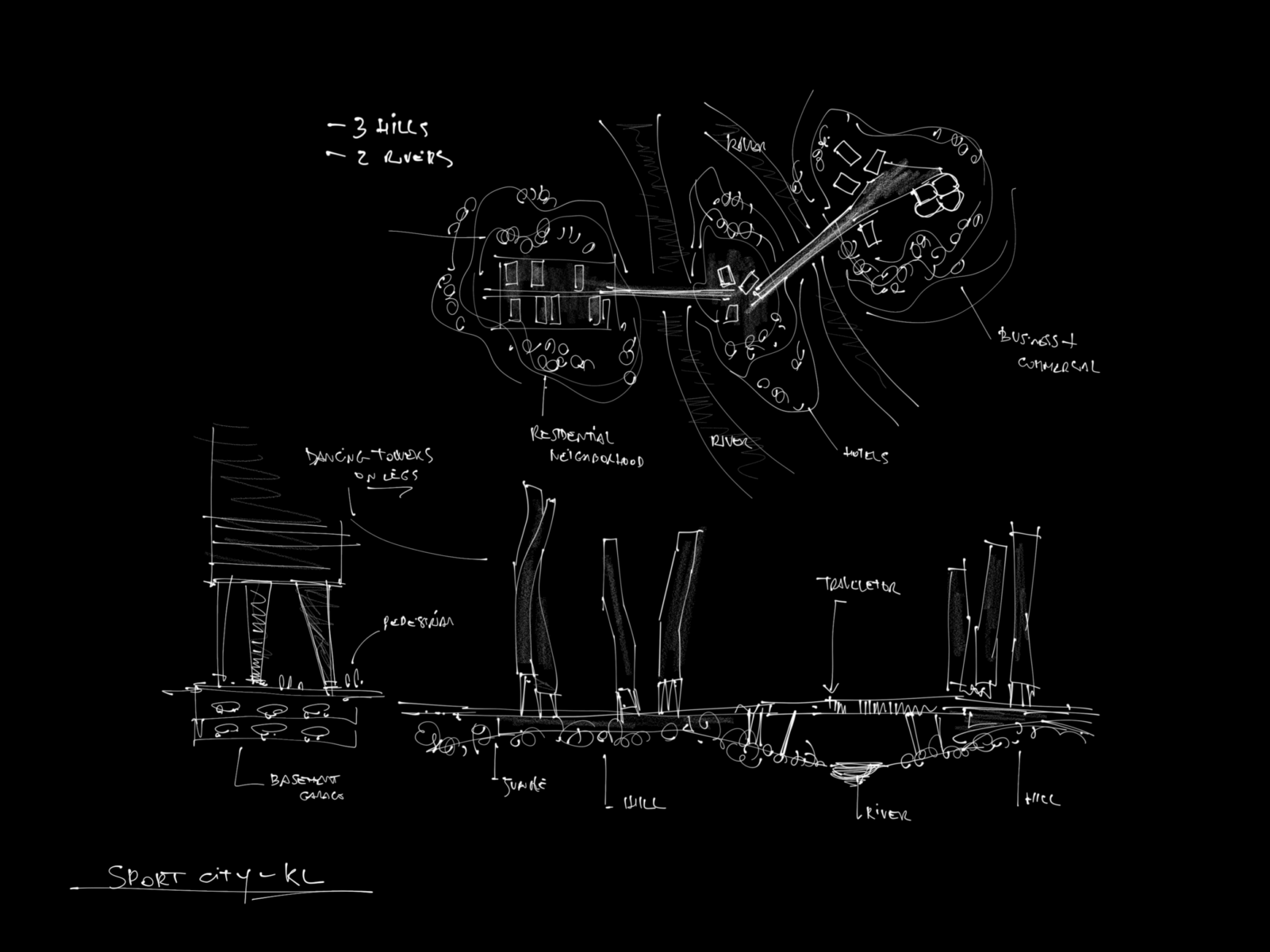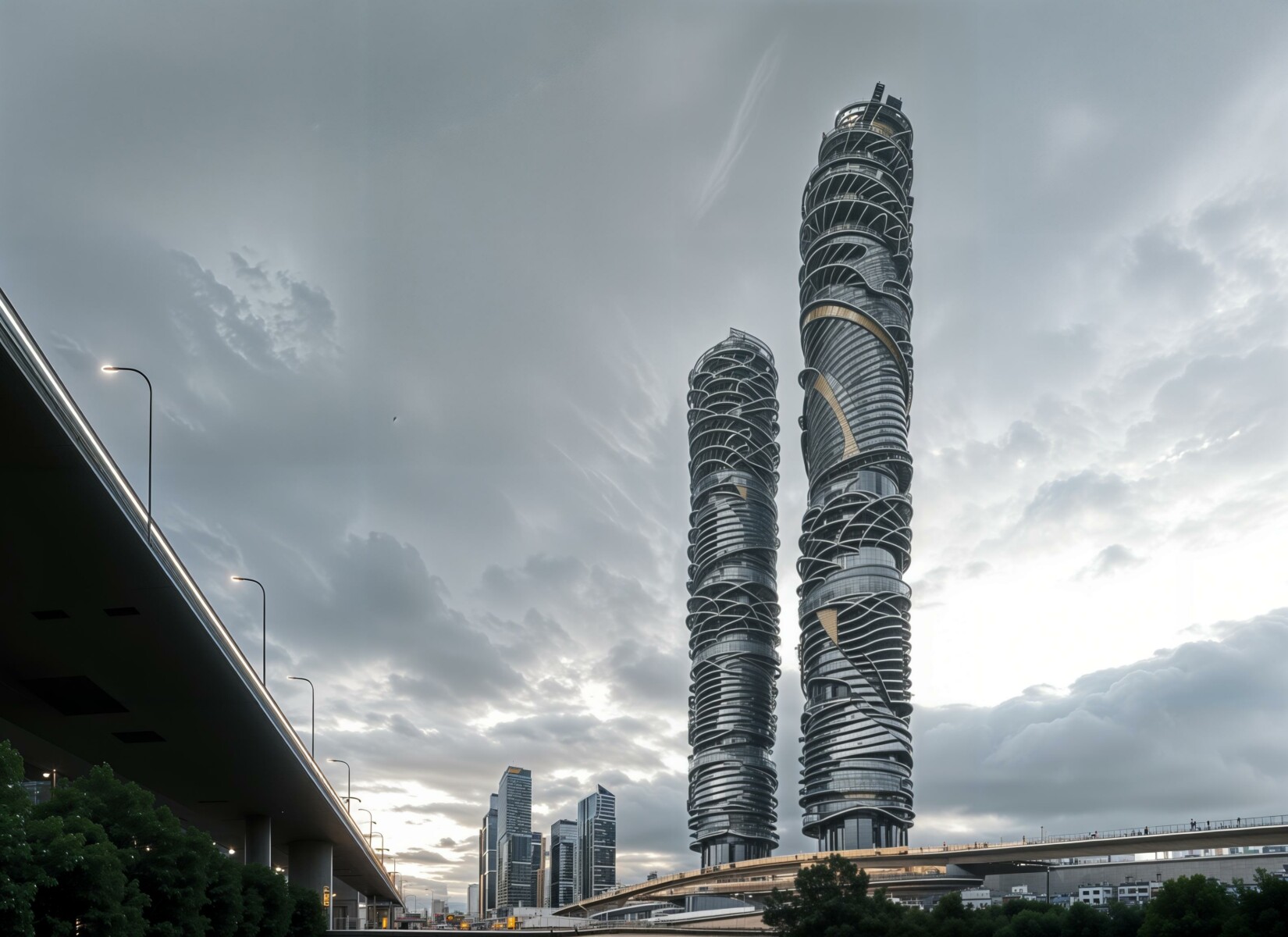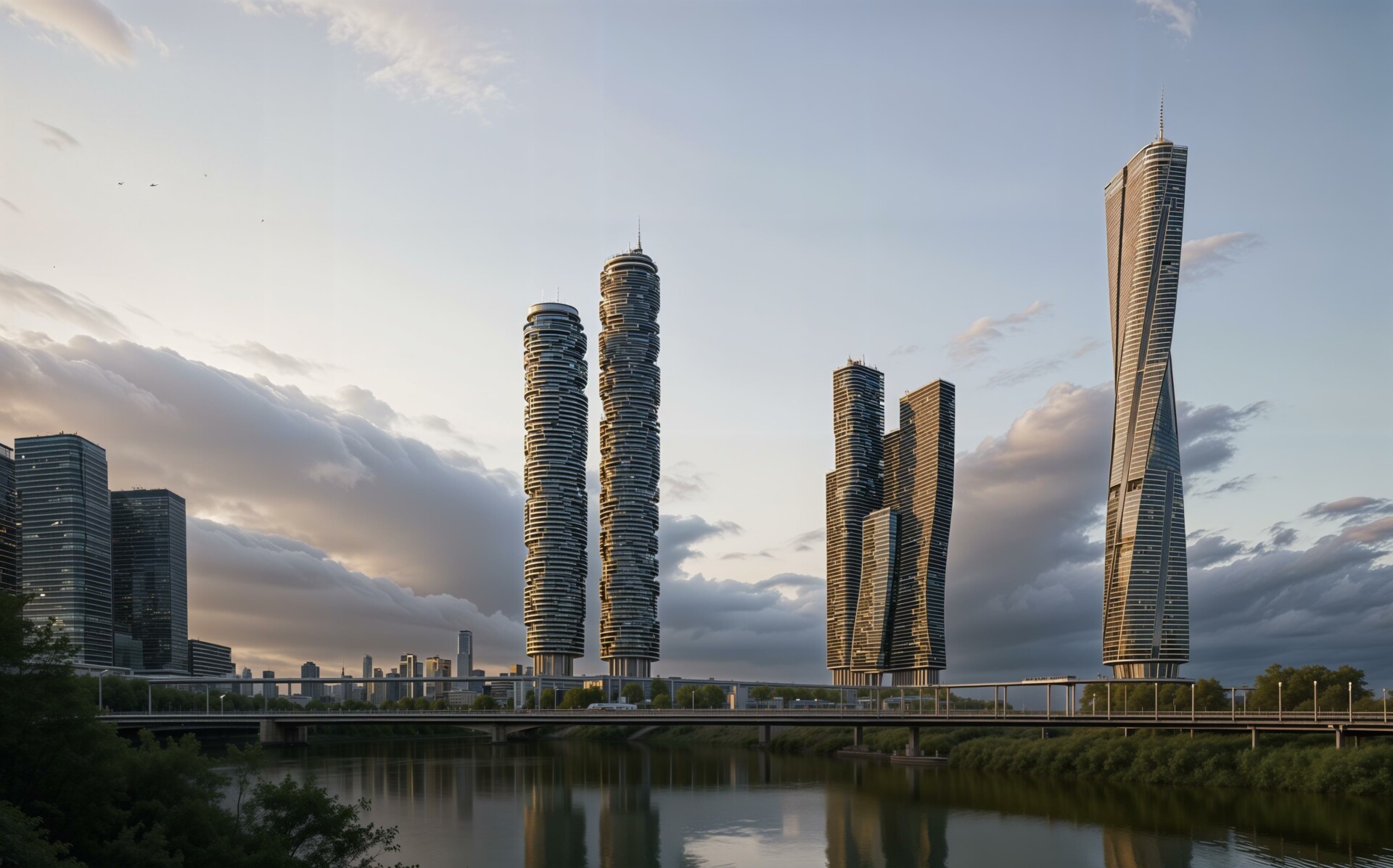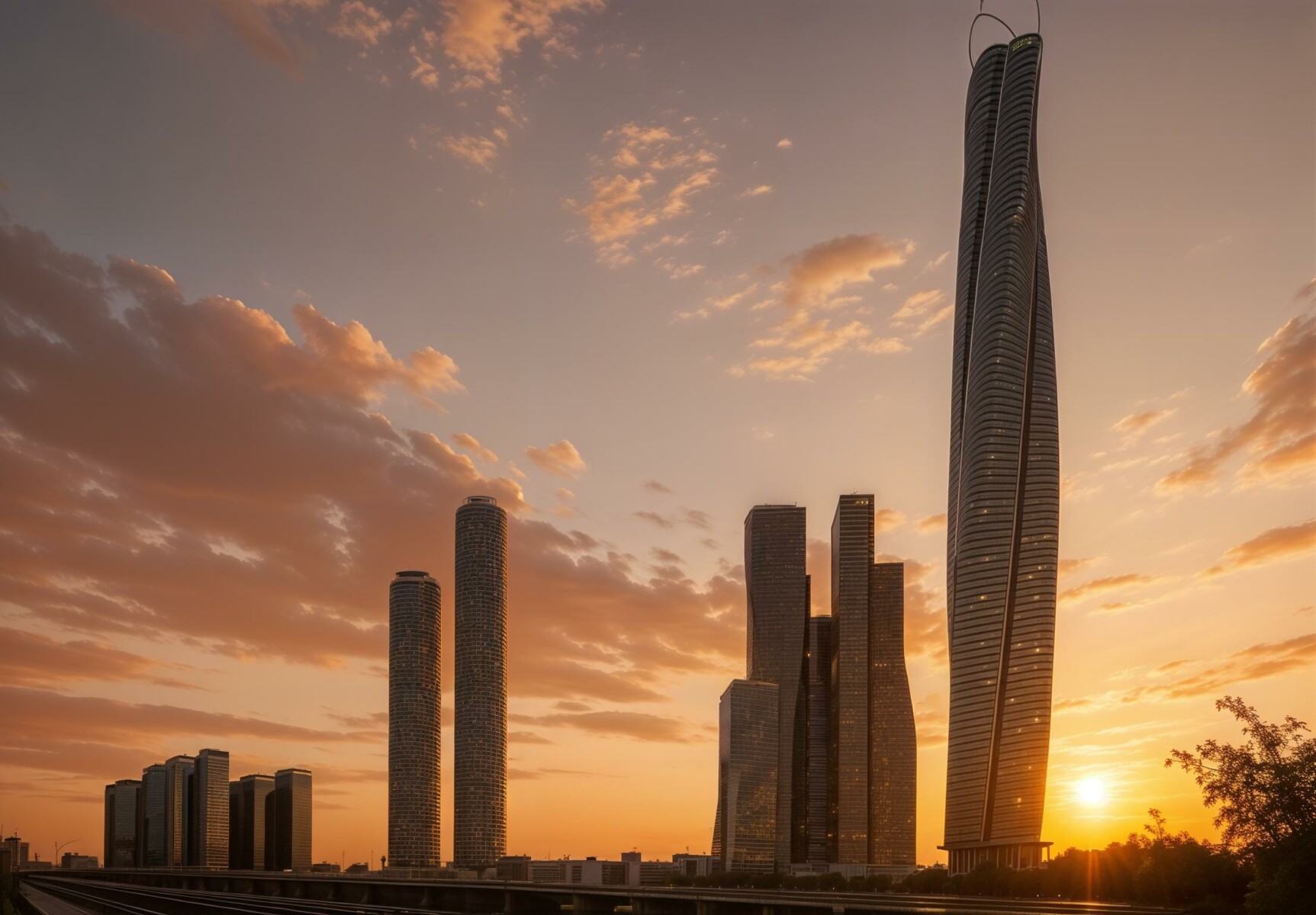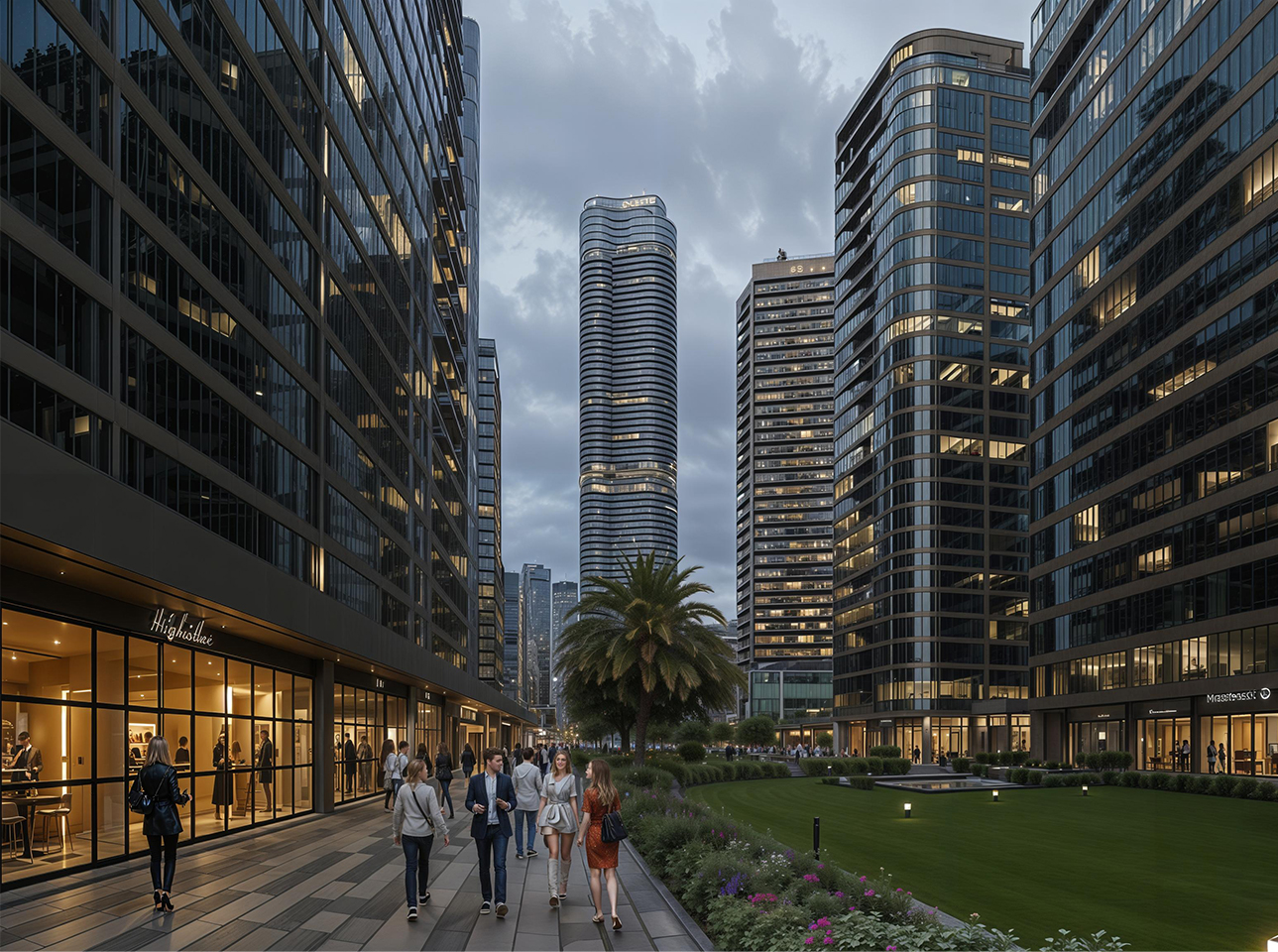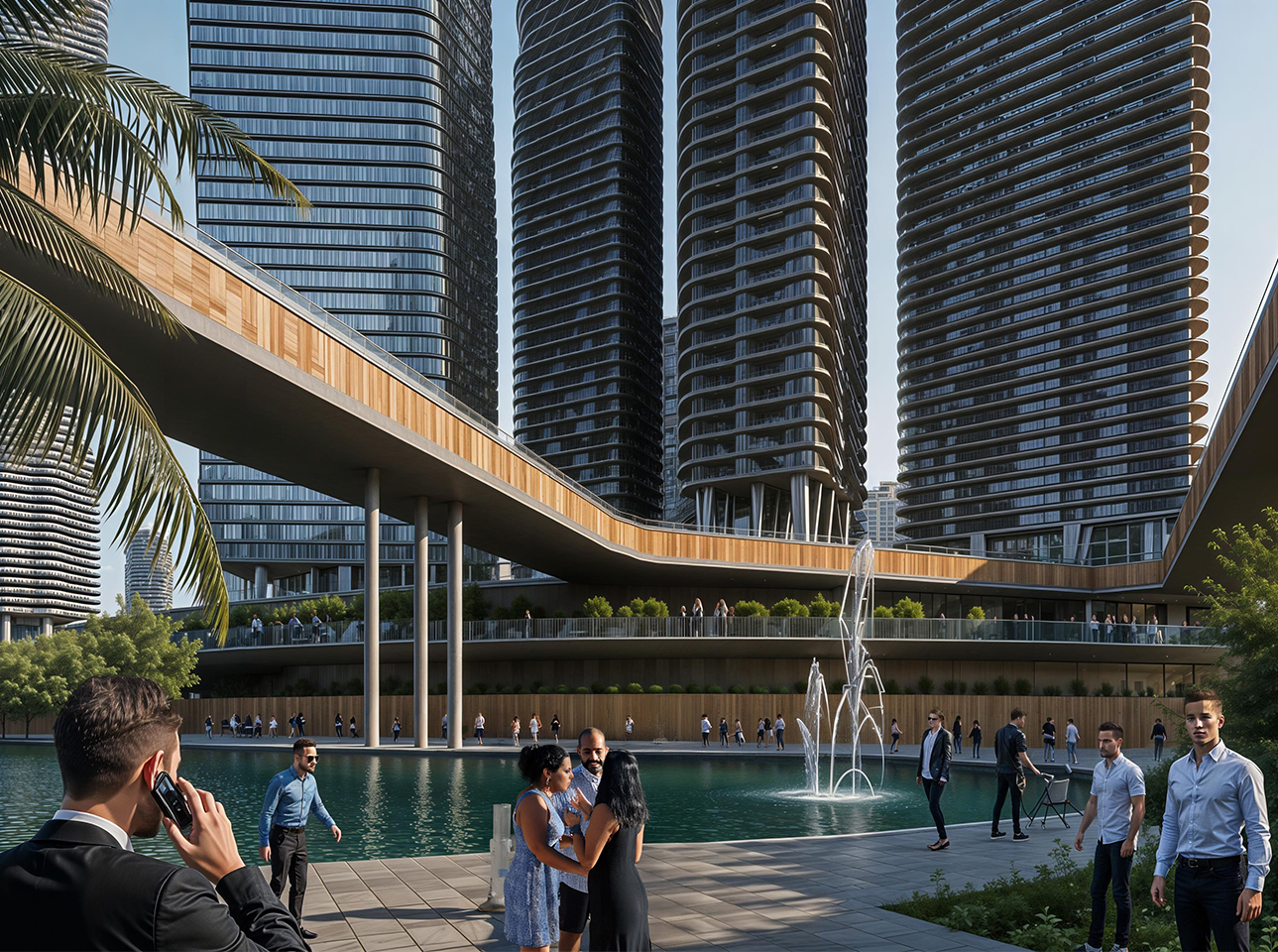Sport City | KL
1. Vision and Objectives
The masterplan’s ambition is to create a new urban district that blends the dynamism of contemporary Kuala Lumpur with a sustainable, integrated approach to mobility and quality of life.
Proposed by MRCB, one of Malaysia’s leading mixed public-private developers, the project aims to replace the former Olympic Village with an international-scale multifunctional hub capable of attracting global companies, high-end residents, and cultural activities—establishing itself as a new metropolitan landmark.
2. Urban Form and Structure
-
Iconic Towers: The district is dominated by a cluster of fluid, sculptural skyscrapers, some exceeding 300 meters in height. Their continuous glass-and-metal façades capture and reflect the tropical light, producing an ever-changing skyline.
-
Elevated Pedestrian Spine: A network of aerial bridges forms the backbone of the district, connecting multiple “urban islands” and creating a fully pedestrian environment. Vehicular traffic is relegated to lower or underground levels.
-
Urban Islands: Each island functions as a self-sufficient unit with a balanced mix of offices, residences, retail, and public facilities, all embedded in tropical greenery.
-
Dialogue with Nature: Landscape design embraces native vegetation, transforming the masterplan into a “vertical forest” with lush planted terraces.
3. Program and Functions
-
Corporate & Tertiary Sector: High-performance office towers for international headquarters, business hubs, and state-of-the-art coworking spaces.
-
Residential: Premium apartments with panoramic views of both the city and the surrounding jungle, complemented by shared wellness amenities.
-
Culture & Leisure: Galleries, urban theatres, convention centers, and integrated sports facilities.
-
Retail & Dining: Active podium levels hosting shopping malls, covered markets, and panoramic restaurants.
-
Sustainable Mobility: Fully pedestrian and bike-friendly internal circulation; direct connections to the metro and commuter rail network.
4. Sustainability & Innovation
-
Energy: Integration of renewable sources (building-integrated photovoltaics, small-scale wind turbines).
-
Water: Rainwater harvesting and recycling systems, natural treatment through phytoremediation.
-
Materials: Preference for low-impact, recyclable building materials.
-
Technology: Smart city systems with environmental monitoring, energy management, and security sensors.
5. Urban Impact and Value
The project aspires to become more than just a striking skyline for Kuala Lumpur—it aims to serve as a prototype for the city of the future: inclusive, sustainable, and seamlessly connected, where urban living is harmoniously integrated with the natural environment.
Thanks to its strategic location and strong public-private investment, the masterplan is set to catalyze economic activity, increase property values, and reinforce the Malaysian capital’s global image.
Location / Kuala Lumpur | Malaysia
Year / 2017
Client
/ MRCB Sdn BhdStage
/ Schematic DesignLot area
/ 150 AcresSurface
/ -Team di Progetto
Design Team
/ OBICUA as BICUADRO architects, Akitek Rekabina Sdn. Bhd.



